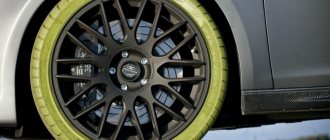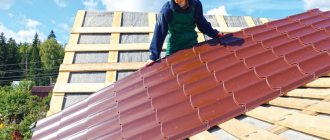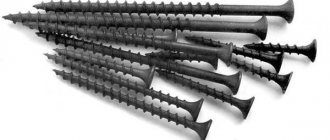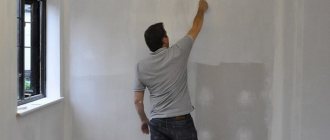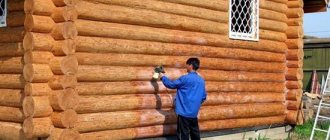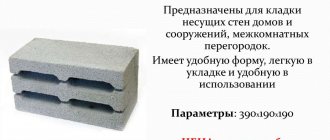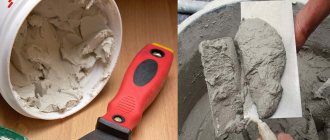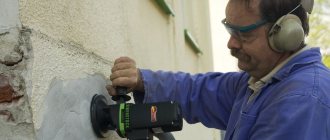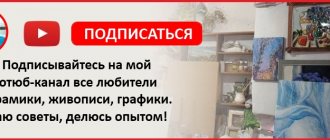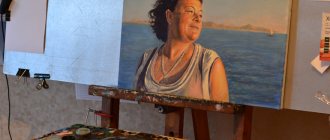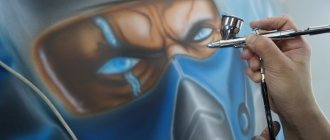Published: 10/20/2020
- Types of airbrushes
- Little tricks when working
- Alkyd paint
- Stages of applying an image
- We provide professional paint selection services for Volkswagen
- Nitro paints
- Soil and its varieties
- Recommendations from experienced car owners and mechanics
- How to use acrylic paints, features
- The main types of paint and varnish products for airbrushing
- Types of airbrushing, the difference between them.
- Tools needed to create an airbrush design
- Scorpion
- Recommended sections
- Conclusion
Types of airbrushes
There are several types of airbrushes:
- by type of paint mixing: internal and external mixing;
- on the method of supplying the solution: gravity, siphon and hybrid;
- by type of starting control: lockable and flow-through;
- according to the order of adjustment of the passage of air and dye: single and double action.
Internal and external mixing
The design of a spray gun with internal mixing requires the presence of additional pipes mounted in the airbrush body. A colorful mixture is formed inside the device. Therefore, you can clearly determine its consumption and regulate the flow. This type of airbrush is especially valuable when applying small images. The more securely the needle is fixed, the more accurate the drawing will be.
There are several types of airbrushes
External mixing is used in simpler devices. The principle of its operation is based on applying paint without additional regulators. In such devices, the mixture is sprayed in an even layer. External mix airbrushes are especially appreciated by beginning artists because they can be used to evenly coat a surface with a uniform layer of paint.
Gravity, siphon, hybrid
With the siphon type of supply, the tank with paint is installed on top, and thanks to gravity, a uniform stream emerges from the nozzle of the device. For beginners, in order to quickly master the operating principle of this type of airbrush, it is better to replace the compressor with an air bulb.
An airbrush with a hybrid feed type is designed to work with dyes of the highest density. The operation of the device is based on the difference in excess pressure. And the tank with dyes can be located both at the top and at the bottom of the device.
Flow-through and lockable
The flow airbrush operates without subsequent adjustment of the spray pattern. This operating principle is used in modern spray guns. After the device starts operating, the master controls the paint supply process only by turning it on and off. It is not possible to adjust the pressure during the process.
Beginners especially appreciate airbrushes with external mixing.
But lockable airbrushes provide the ability to adjust the dye supply density using a trigger. Also, such devices are equipped with an additional paint consumption system for applying layers of the required thickness.
When choosing an airbrush, you should pay attention to:
- size, weight of the device;
- container volume for dyes (at least 2 pieces from 2 ml);
- number of nozzles;
- the presence of a Teflon seal for the needle;
- number of regulators.
Dilution process
- First, the compressor outlet pressure with the airbrush valve open is set to 19-20 psi (1.5 bar).
- The paint is stirred and dripped into the device, without diluting, in a small amount (1-2 drops).
- Then they watch how it flows down the wall of the tank, blow it off and listen. If the material does not inflate, increase the pressure.
- Next, mix the paint with the solvent in a 1:1 ratio in a container, pour it into an airbrush, slightly reducing the pressure, and observe changes in the behavior of the substance and the transparency of the layer.
- The behavior of the material is then examined when diluted 1:5 in an airbrush at 10 psi (0.8 bar).
Little tricks when working
Once you figure out how to paint with an airbrush, you can create a picture on the wall or beautifully paint a fence. A few tips from the experts will help speed up the process and make it more convenient. These recommendations are suitable for both beginners and those who are not drawing on walls for the first time:
- When operating the painting device, it is advisable to hold it perpendicular to the surface. When applying a design to a horizontal plane, the paint spray angle should be greater than 45ᵒ. This technique will allow the dye to be evenly distributed.
- The intensity of coloring, thickness of lines, and quality depend on the distance between the device and the object of decoration. If you need to change this distance, then this should be done smoothly, without jerking.
- If leaks occur, do not eliminate them immediately. You need to wait until it dries, then carefully remove the excess paint with fine sandpaper, and then correct the drawing.
- To make the creative process faster, it is advisable to have several containers for different colors - this will speed up the process of changing colors. You no longer need to clean the tank additionally; just rinse the device and attach a container with a different shade of paint to it.
Using an airbrush, you can paint a large area in a short time, while the dye will be used sparingly, it will lie evenly on the base, and the design will turn out beautiful. By changing the supply of the mixture, using this device it is easy to create realistic, durable paintings on the walls.
Stages of applying an image
After studying the video and preparing all the tools, you can get to work.
First you need to decide on the design; it’s a matter of your personal taste and preference. The finished image on your car will become an object of your pride if you make it yourself. The selected image should fit harmoniously into the place where you are going to apply it. An example would be photos and videos from the Internet showing how to do airbrushing with your own hands. Then a place on the car is determined, which can be the door, hood, roof or most of the surface of the car. If there are defects on the car body, they should be eliminated before work. Determine the room where the work will be carried out. It should be light, tightly closed and dust-free. Then the process of applying the image using nitro paints takes place.
At this stage, you will need increased attention, since this is a very important moment. If you doubt your abilities, you can prepare special stencils
The image should be applied in parts, while the other surface of the car must be covered with film. After completing the work of applying the image, after complete drying, the car must be coated with a special varnish.
While doing the work yourself, you can film the process itself so that you can then share it with other beginners. Airbrushing can be a great hobby, as well as a means of generating good income.
Nitro paints
Nitro paint for airbrushing on a car
The first difference between nitro paints and water-based enamels is the need to use a solvent. They are sold in specialized salons and are presented in a wide variety. The fraction of nitro paint particles is so small that the material sets almost immediately after it is applied to the surface of the car body. This property will be especially useful when you need to draw a thin pattern or supporting ornament with your own hands, when there is no time to wait for it to dry. Now let's look at the main disadvantages of nitro paints:
- Each nitro-enamel has an indexation, due to which the finished result (color, its shade and saturation) may differ from the expected one, which is explained by the interaction of the paint with the surface, as well as the transformation of its chemical composition as it dries;
- Relatively low brightness: the problem is solved by using a white background (pre-applied to the body);
- Deep penetration into the surface structure: by removing the top layer of nitro paint, you will expose subsequent layers to rapid abrasion and damage;
- Increased toxicity characteristic of such materials (it is necessary to use a respirator, and also take care of good ventilation of the room in which painting work will be carried out).
Soil and its varieties
Airbrush painting on metal or plastic also includes pre-treatment, incl. covering with soil
For high-quality application, it is extremely important not only to decide on the type of paint, but also to choose a primer. This material is a primary (base) coating for leveling the surface, which directly determines what type of paint will be used in the work
It is the soil that determines the strength of the paint composition. In addition, some paints simply cannot be applied without a preliminary primer.
For high-quality paint application, the primer must have a number of characteristics:
- high degree of adhesion;
- good hiding power;
- smooth surface, silky texture;
- repellent properties of the coating so that the paint is not absorbed.
There are three main types of soil:
- adhesive;
- epoxy;
- primer-filler.
Adhesive
To create a good bond between the surface to be applied and the paint layer, this type of primer is used. The main advantage of adhesive primer is its rapid drying. In addition, it adheres very well to metal structures and plastic surfaces. This allows you to apply it both to the car body and to plastic elements.
Epoxy
The first thing that is important to know for anyone who prefers to use this type of soil is that the material is very toxic. That is why in the room where it is planned to use the soil, it is necessary to have powerful ventilation
It is advisable to work with such material in a respirator. The main characteristics of epoxy are as follows:
- the application layer is thick;
- very long service life;
- easy to sand;
- Corrosion resistant.
When working with epoxy primer, you should adhere to the operating rules
It is important that the metal surface is properly treated before applying primer. If the metal is not clean enough, the primer will not apply evenly.
Advice! Before applying epoxy, do not treat surfaces with acidic agents with an etching effect.
Soil filler
This soil composition is two-component. Most often it is a cross between base acrylic and urethane. This primer can be applied in two ways: on a prepared, cleaned surface or on epoxy. It is highly not recommended to use this type of primer together with acid-based products.
Conclusion
As you can see, the most important thing in mastering the intricacies of airbrushing is a great desire and the availability of a quality tool. And there are many application options and types of paints available for both professionals and amateurs.
Question: “In what proportions is it better to dilute airbrush paint?” occurs quite often among beginners.
p, blockquote 1,0,0,0,0 –>
There are two short answers.
p, blockquote 2,0,0,0,0 –>
Short answer No. 1 – The paints are all different and the proportions may differ each time. Even paints from the same manufacturer may require different proportions for dilution. The paint may have sat in the container for a while and become a little thicker.
p, blockquote 3,0,0,0,0 –>
Short answer #2 - It's not that important. Depends on your preferences and the work being done.
p, blockquote 4,0,0,0,0 –>
Only 4 factors influence how the paint should be diluted:
p, blockquote 5,0,1,0,0 –>
- Design and type of airbrush. Some airbrushes spray paint well at low pressure better than others. Siphon-feed airbrushes typically require more pressure than gravity-feed (top-tank) airbrushes. Internal mix airbrushes generally spray paint better at low pressure than external mix airbrushes. This factor also includes the size of the airbrush nozzle and needle. Some airbrushes come with replacement nozzles and needles.
- Viscosity or thickness of paint.
- The volume and pressure of air passing through the airbrush.
- The distance between the airbrush nozzle and the surface.
You cannot change the design of the airbrush other than changing the nozzle and needle, but you can change the other three factors.
p, blockquote 6,0,0,0,0 –>
The thinner may evaporate and the paint become thicker, you move your hand with the airbrush closer to the surface, or the pressure may change depending on the temperature or pressure surges when the compressor motor turns on and off.
How to use acrylic paints, features
Acrylic paints for artistic drawing have characteristic differences from student paints - they are available in a wide variety of shades and have a more saturated tone. They are easy to use; at the initial stage it is recommended to have a set of 7-10 colors.
Artists recommend having the following basic shades with you:
- white;
- green:
- brown:
- pink or purple;
- black.
To learn how to create unique paintings, masters advise following these recommendations:
- Using a palette knife or brush, you can mix paints on the palette to create new color combinations and rich shades. When performing this procedure, using a color disk will help; it will make it easy to understand what color you will get when mixing certain paints;
- adding water will help lighten the paint and give it a watercolor look;
- to change the texture, acrylic paints can be mixed with texture pastes, this will allow you to create and highlight different areas in the picture;
- mixing paints with varnish will create a shiny and silky effect;
- If you put 2-3 layers of paint on top of each other, you can get an interesting layering effect. Here you need to take into account that each layer must be given at least 30 minutes to dry;
- to create a bubbling effect, you need to make blotting or smearing movements with a regular sponge, dipping its corner into the paint;
- The splashes will give the painting an original look; they can be obtained by clicking your finger on the end of the brush, moistened with paint;
- an abstract drawing is obtained by applying lines in small strokes or dots with the end of the brush, holding it vertically to the base.
A wonderful effect can be achieved by mixing paints not on the palette, but directly on the base in those places where you need to paint a large space, for example, when drawing fields or an autumn forest.
When mixing with water, you should take into account the fact that the shade of the paint darkens after drying, that is, you need to dilute the pigment a tone lighter than necessary. You can also lighten dark paint by adding a white tone.
When painting on canvas, fabric
Special paints that are labeled with the word “batik” are suitable for painting on fabric. They are available in a wide range of shades and are durable, flexible and moisture resistant. Dyed fabric can be washed at a temperature not exceeding 60 °C.
The dye is applied directly to the fabric, and a fixative is used to separate the color boundaries. This product is called reserve and can be made from gasoline, water or paraffin.
When drawing on a smooth surface, painted walls
Acrylic paints are convenient to use for painting on walls because they have the following features:
- dry quickly;
- they are environmentally friendly and do not have a harmful effect on the human body;
- wide palette and ease of mixing, which allows you to create any pattern.
When painting walls, it is better to select durable paints that form a water-repellent coating - this will allow wet cleaning without harming the painting.
Before decorating a smooth surface, special attention should be paid to degreasing it.
If this is not done, the paint will not stick. Plastic must be treated with an antistatic agent, since during the painting process dust and lint can be attracted to it, which will ruin the design.
Acrylic paints for wall painting are made on the basis of artificial resins, and the pigment can be either synthetic or natural. Using artificially created pigment, the color of the paints is bright, dense and rich. If a pigment of natural origin is used, the color of the paint is delicate, soft and has pastel shades.
When drawing on rough, uneven surfaces
Decorating uneven and rough surfaces has the following features:
- Before painting, the area to be treated should be degreased and cleaned with fine-grained sandpaper;
- Before applying the design, the surface should be covered with a primer material, otherwise the image will be uneven;
- if the wood has been pre-painted. Then there is no need to apply a primer layer;
- An adhesive layer must be applied to the plywood, which will strengthen the adhesion of the paint and the material.
The main types of paint and varnish products for airbrushing
Currently, airbrushing is used not only for vehicle decoration. A variety of designs made using an airbrush can be found on walls and furniture, on computer equipment and even on smartphones. If you have artistic talent, you can make such images yourself. The most important thing is to be very responsible when choosing paints suitable for an airbrush.
It is equally important to choose the right soil for this process.
All paints intended for use with an airbrush can be divided into three large groups:
- water-soluble acrylic compounds;
- base urethane paints;
- multicomponent multistage compositions.
It is important to note that they all differ in the method of application. Thus, water-based acrylic products can be sprayed in either one or two stages - depending on the result you want to get.
One of the prerequisites for using urethane paints is varnishing. And multi-component paint compositions are always applied in three stages.
Features of acrylic compositions
One of the most popular and sought-after types of paints and varnishes are water-based acrylic airbrush paints. They are characterized by many advantages, among which are:
- a wide color palette - from neutral translucent shades to rich and bright ones;
- high level of hiding power, eliminating the need for multi-layer paint coating;
- good adhesion, which, in combination with a significant reserve of time for hardening, allows you to create interesting effects when applied;
- absolute non-toxicity due to its water-dispersed base;
- Possibility of use on almost any type of surface.
High-quality water-based acrylic airbrush paints are very convenient for DIY application. They are easy to dilute to obtain the required consistency by mixing with a certain amount of distilled water.
To wash off such a coating, it is necessary to use special high-quality chemicals. This feature of acrylic paints is greatly appreciated by many artists, because it makes it possible to create drawings with interesting effects.
Nitroenamels - characteristic features
The main competitor of liquid acrylic paint for airbrushing is nitro enamel, which is very widely used in the design of automotive vehicles.
These tools also have many advantages and disadvantages that make your work much easier:
- They dry several times faster compared to acrylic products.
- With their help it is much easier to apply perfect thin lines.
- Using such tools, you can create translucent fills that look very impressive.
However, nitro paints are not without certain disadvantages. In particular, the tones and shades are less bright and expressive, and their hiding power is far from the best. Using two different colors, it is almost impossible to achieve a beautiful tone - to prevent the appearance of a grayish tint, you should use a light base.
Due to the fact that not all airbrush models are suitable for working with nitro paints, you should carefully study the information indicated on the packaging of the product you have chosen.
Please also note that nitro paint compositions are highly toxic. Therefore, it is recommended to use them in special boxes where high-quality ventilation is provided.
In addition, all work must be carried out in special equipment.
Watercolor and its features
Another type of paint that you can use to apply your own airbrush design is watercolor. Of course, it is only suitable for paper and some types of decorative plaster, so it is widely used in interiors. It is recommended to use such paints for those who wish to acquire artistic skills and improve them.
Watercolors are characterized by the following properties:
- ease of mixing and rinsing;
- absolute absence of harmful substances in the composition;
- ease of spraying.
Currently, both dry watercolor paints for airbrushing and those made in the form of a water-based paste are available. To obtain the required consistency, simply dilute them with plain water.
Auto enamels
Acrylic car enamel Motip: different types of packaging
You need to dilute such substances using water - filtered or the one that comes with acrylic products. It is the least toxic, which is important when dyeing. It will also dry quickly, which will allow you to quickly apply several layers of paint and varnish products and save your time.
The technique of staining with such substances also has disadvantages. For example, experts note color indexing, which may prevent you from getting the shade you want when mixing.
Tools needed to create an airbrush design
If you have already decided to figure out how to do airbrushing at home, then you will need:
- Airbrush;
- Dye;
- Stencil;
- Materials for preparing the surface for painting (abrasive paper, mat paste, abrasive sponge);
- Varnish, polish, to fix the resulting image;
- Patience and perseverance, as well as the desire to create an original work with your own hands.
Choosing an airbrush
First, you will need to purchase an airbrush, and for this it would not hurt to study and evaluate its main characteristics. The airbrush is the main element of applying an airbrush image, but other artistic techniques and techniques are also used in airbrushing.
Selecting the diameter of the airbrush nozzle
The most important characteristic when choosing an airbrush is the diameter of the nozzle when supplying paint. To perform different types of work, different types of airbrushes are used, it also depends on what area you intend to paint. So, for the background, airbrushes with a nozzle diameter of 0.35 mm are used, and for the main details you should choose 0.2 mm.
It is also important to consider the method of applying paint; it depends on the location of the tank on the airbrush. The tank can be located at the top, bottom, side, or even the airbrush can be without a tank
In the latter case, the paint is fed directly to the needle through a side slot, and this type of airbrush is suitable for small jobs or jobs that require frequent paint changes. If the tank is located at the bottom or on the side, then to work with this airbrush you will need a more powerful compressor; for a compressor with low power, the most suitable is an airbrush with the tank on top.
There are also single-action airbrushes, which are simple and easy to operate, as a rule, and their price is quite low. Dual-action airbrushes that allow you to control both the air supply and the position of the needle. These airbrushes are more expensive than their single-action counterparts, but they produce the most accurate and realistic images. Automatic airbrushes allow you to control the needle only after the airbrush starts working.
single action airbrush
A single-action airbrush may be suitable for beginners, but you should keep in mind that you may soon need a more expensive device. Therefore, your choice should be on the golden mean: an automatic airbrush or a double-action airbrush with a nozzle diameter not exceeding 0.2 mm. There are also kits with replaceable nozzles, they will help you save money, and significantly, but you will need more patience and perseverance when using them during operation. You will also need to purchase additional accessories: a respirator, an air filter, a hose, and a stand. There are also airbrush kits on sale, which already include all of the above accessories. After choosing an airbrush, you need to choose the right paint. Airbrush paints come in two types: diluted with a special solvent and water-soluble. Water-soluble paints include: ink, gouache, watercolor and acrylic paints. Paints diluted with special solutions are available on polyurethane and nitro bases. The choice of paint for airbrushing depends on the material on which you plan to apply the design.
Airbrush paint should be diluted to a liquid consistency, reminiscent of low-fat milk. The quality of its spraying depends on how correctly the paint is diluted. If you use too thick paint, the spraying will be slow and there is a high probability of blocking the airbrush nozzles; this result cannot be avoided even with increasing pressure.
Best models
Among the most famous and high-quality dyes for airbrushing presented on the domestic market, experts highlight:
- House of Color. The materials of this brand are of high quality and wide range. They offer both base and clear agents, chameleons, as well as primers and a variety of materials that an auto repair and refinisher might need; It has a high price, but its quality is beyond doubt;
House of Kolor paint
- Series Hecker. The company offers a wide range of products for creating drawings of any complexity; The company produces products for cars, so its paint is most suitable for creating realistic drawings on cars.
A good way out would be to buy several paints from various brands and apply them to your car. You should not buy the entire range of one company - poorly chosen products can upset you with low quality and high costs.
Author: Vysotsky Alexander Petrovich
Higher education: Chita State University, Institute of Technological and Transport Systems, specialty - cars and automotive industry. Repair of passenger cars of domestic and foreign origin. Chassis repair,…

